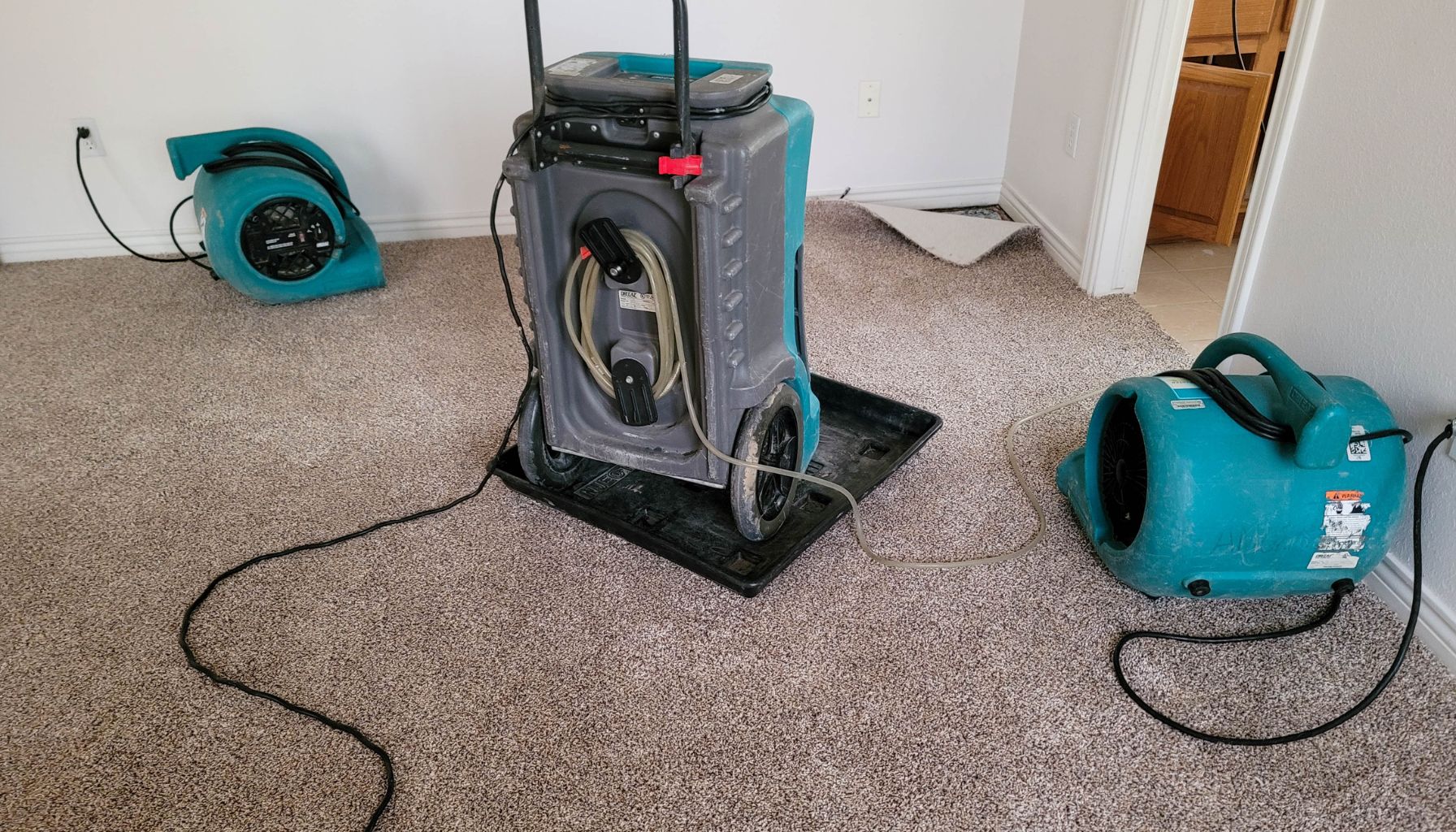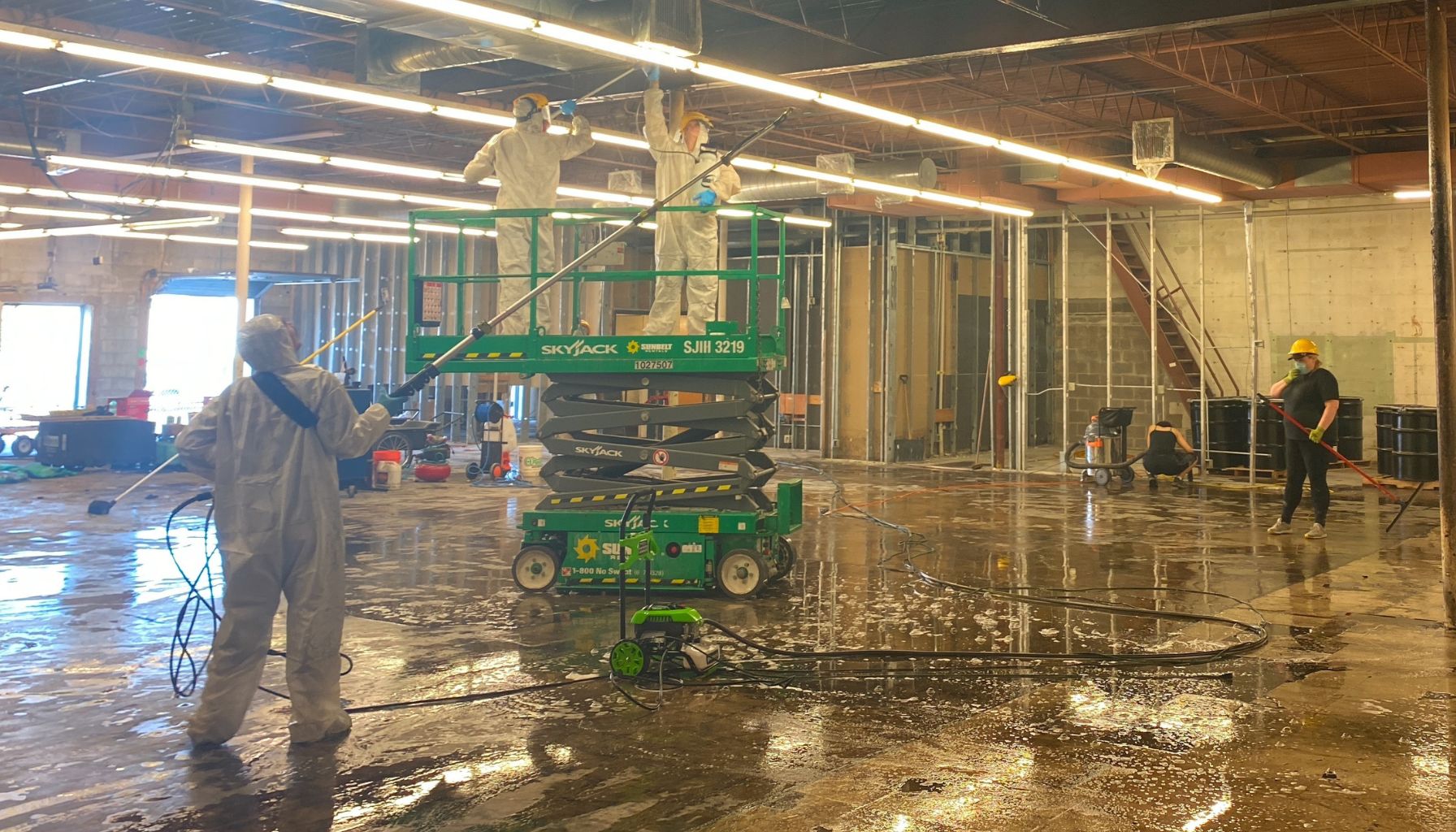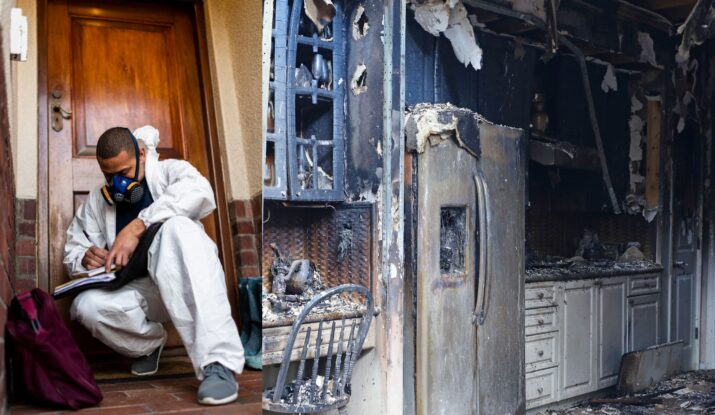Getting your house back to normal after a fire
Imagine your worst nightmare: a fire engulfing your home, causing significant damage and leaving you feeling devastated.
But fear not, because in this article, we will explore the most effective fire damage restoration techniques that can help you recover from such a traumatic event. From smoke and odor removal to structural repairs, we will guide you through the process of restoring your home back to its former glory.
So, sit back, relax, and let us lend a helping hand in turning your nightmare into a distant memory.
Understanding the Nature of Fire Damage
Chemical characteristics of fire and smoke
When a fire occurs, it releases a variety of chemicals and gases into the air. The composition of the smoke depends on the materials that are burning. For example, fires involving wood will produce different smoke than fires involving plastics or chemicals. These various gases and particles can have detrimental effects on both humans and the environment. Understanding the chemical characteristics of fire and smoke helps professionals assess the extent of the damage and determine the most effective restoration methods.
The impact of fire on different materials
Fires can cause significant damage to different types of materials found in buildings. Wood, for example, can become charred and weakened, potentially compromising the structural integrity of the property. Metal surfaces can become warped or corroded due to extreme heat. Fabrics, carpets, and upholstery can be destroyed by fire and may also become heavily soiled with smoke and soot residue. Understanding how fire impacts various materials is crucial in determining the appropriate approach to cleaning and restoring them.
Secondary damage caused by smoke and soot residue
While the initial damage caused by fire is evident, the secondary damage caused by smoke and soot residue should not be underestimated. Smoke particles can settle on surfaces throughout the property, leaving behind a layer of soot. This soot can be acidic, causing further damage to materials and surfaces if not promptly addressed. Smoke and soot can also penetrate porous materials such as fabrics and upholstery, making thorough cleaning and deodorization essential to eliminate lingering smells.
Assessing the Extent of Fire Damage
Professional inspection methods
When assessing the extent of fire damage, it is crucial to call upon the expertise of professionals. They have the knowledge and tools necessary to identify hidden damage that may not be immediately visible. Professionals use specialized equipment, such as thermal imaging cameras, to detect areas affected by fire and water damage. They will inspect not just the areas directly impacted by the fire but also adjacent spaces to ensure all damage is accounted for.
Identification of visible and hidden damage
Fire damage is not always immediately apparent. While some damage may be visible, other areas may be affected but hidden from sight. Professionals are trained to spot signs of hidden damage, such as water intrusion, mold growth, and compromised structural integrity. Identifying hidden damage is crucial to prevent further deterioration and ensure a thorough restoration process.
Prioritizing safety hazards during the assessment
During the assessment, safety hazards should be promptly identified and addressed. These hazards may include structural instability, electrical dangers, or possible asbestos materials. Professionals are knowledgeable about proper safety protocols and will prioritize addressing these hazards to ensure the safety of occupants and workers. By prioritizing safety hazards, the restoration process can proceed smoothly and without unnecessary risks.
Securing the Property Post Fire
Boarding up and roof tarp services
After a fire, one of the first priorities is to secure the property to prevent unauthorized access and further damage. Boarding up windows and doors helps protect against theft, vandalism, and the elements. Additionally, roof tarp services can be utilized to cover any openings or holes in the roof, preventing water from entering the property during the restoration process. By securing the property, further damage can be minimized, and the restoration process can proceed without interruptions.
Securing structural stability
Fires can significantly compromise the structural stability of a building. It is essential to assess the structural integrity and take necessary measures to secure the property. This may involve temporary shoring, bracing, or even full structural repairs. By ensuring the building is structurally sound, the safety of both workers and future occupants is assured.
Protecting unaffected areas
Not all areas of a property may be affected by fire damage. It is important to protect these unaffected areas during the restoration process. This may involve sealing off unaffected rooms with plastic barriers to prevent cross-contamination or utilizing air filtration systems to maintain indoor air quality. Protecting unaffected areas helps minimize the spread of soot residues and odors, ensuring that the restoration process does not cause additional damage.
Smoke and Soot Removal Techniques
Dry cleaning soot from surfaces
One of the primary steps in smoke and soot removal is dry cleaning surfaces. Dry cleaning involves using specialized methods and tools to remove loose soot particles from affected surfaces. Techniques such as vacuuming, brushing, and dry sponging can be employed to carefully lift the soot without further smudging or spreading. Dry cleaning is often the first line of defense in the restoration process to remove initial layers of soot before moving on to more intensive cleaning methods.
Using special cleaning agents
Smoke and soot residues can be challenging to remove from surfaces. Specialized cleaning agents and solvents are often necessary to effectively break down and remove these residues. These agents are designed to target specific types of soot and smoke particles without causing further damage to the material being cleaned. Professionals are trained to select the appropriate cleaning agents for different surfaces, ensuring that the restoration process is effective and safe.
Ozone treatment for neutralizing smoke odor
Smoke odor can linger long after a fire has been extinguished. Ozone treatment is a highly effective method used to neutralize smoke odors. Ozone generators release ozone molecules into the air, which permeate the space and chemically react with odor-causing particles. This process breaks down the odor molecules, effectively eliminating the smell. Ozone treatment is particularly useful for removing stubborn odors that may have penetrated deep into fabrics, carpets, and other porous materials.
Water Damage Mitigation
Water extraction and drying
In many cases, water damage accompanies fire damage due to the efforts to extinguish the flames. It is crucial to promptly extract standing water and initiate drying procedures to prevent further damage and mold growth. Professionals utilize powerful extraction equipment to remove water from affected areas. They then set up drying equipment such as air movers and dehumidifiers to thoroughly dry the space and prevent moisture-related issues.

Dehumidification to prevent mold growth
Excessive moisture left behind after a fire can create favorable conditions for mold growth. To mitigate this risk, dehumidification is an essential step in the restoration process. Dehumidifiers remove moisture from the air, reducing humidity levels and preventing mold from proliferating. Professionals strategically place dehumidifiers in affected areas to ensure adequate drying and prevent any potential mold infestations.
Restoring water-damaged items
Water damage can affect not only the structure of a building but also personal belongings and furniture. Professionals specialize in restoring water-damaged items to their pre-loss condition whenever possible. They employ techniques such as specialized drying chambers, content cleaning, and document freeze-drying to salvage and restore items that may hold sentimental or monetary value.
Structural and Content Cleaning
Professional cleaning of furniture, carpets, and personal items
Fire damage often leaves furniture, carpets, and personal items heavily soiled with smoke, soot, and water damage. Professionals use industry-standard techniques and equipment to thoroughly clean and restore these items. Whether it involves steam cleaning carpets, dry cleaning upholstery, or employing specialized cleaning methods for delicate items, professionals ensure that furniture and personal belongings are returned to their pre-loss condition whenever possible.
Structural cleaning and restoration
Structural components of a building can also be severely affected by fire damage. Professionals have the expertise to clean, repair, and restore structural elements such as walls, ceilings, and floors. This may involve removing charred or damaged materials, treating smoke-damaged surfaces, and applying products to encapsulate any remaining odors. Structural cleaning and restoration are crucial steps in returning the property to its pre-fire condition.

Ultrasonic cleaning for delicate items
Delicate items, such as electronics, fine art, or jewelry, require specialized cleaning methods to prevent further damage. Ultrasonic cleaning is a highly effective technique used by professionals to clean and restore these delicate items. Ultrasonic cleaners use sound waves to create microscopic cavitation bubbles in a solution, effectively removing dirt, soot, and other contaminants from the item being cleaned. This gentle yet thorough cleaning method ensures that delicate items are both impeccably clean and undamaged.
Advanced Fire Damage Restoration Techniques
Thermal fogging for odor removal
Thermal fogging is a highly effective method for odor removal in fire-damaged properties. During the thermal fogging process, a deodorizing fog is released into the affected area. The fog penetrates porous materials and reacts with odor-causing particles, effectively neutralizing and eliminating the smell. Thermal fogging is particularly useful for treating large or hard-to-reach areas, ensuring that even hidden odors are effectively removed.
Chemical treatments for stubborn stains
Stubborn stains caused by fire can be challenging to remove using conventional cleaning methods. Chemical treatments specifically designed for stubborn stains can be applied to effectively break down and remove these blemishes. Professionals have access to a range of specialized stain removal products that are safe for use on various surfaces. By using the appropriate chemical treatments, even the most stubborn stains can be successfully eradicated.
Abrasive blasting for severe soot damage
In situations where soot damage is severe or deeply embedded, abrasive blasting is a powerful technique used for restoration. This method involves using abrasive materials, such as sand or baking soda, to gently and systematically remove layers of soot from affected surfaces. Abrasive blasting is precise and effective, ensuring a thorough removal of soot without damaging the underlying material. This technique is particularly useful for restoring hard surfaces, such as concrete, metal, or masonry.
Restoring HVAC Systems
Removal of soot and smoke residue from ductwork
HVAC systems can distribute smoke and soot particles throughout a property, potentially causing ongoing air quality issues if not properly addressed. Professionals utilize specialized techniques and equipment to thoroughly clean HVAC ductwork and components. This involves removing accumulated soot and residue from the system, ensuring that clean air is delivered throughout the property after the restoration process.
Replacing damaged components
In some cases, fire damage may necessitate the replacement of HVAC system components. This may include damaged ductwork, filters, or even the entire HVAC unit. Professionals assess the extent of the damage and recommend appropriate replacements to ensure the efficient and safe operation of the HVAC system.
Improving indoor air quality post-restoration
Restoring the HVAC system is not just about cleaning and repairing; it is also about ensuring the indoor air quality is at a safe and healthy level. Professionals may recommend additional measures to improve indoor air quality, such as installing air purifiers, UV germicidal irradiation systems, or upgrading filtration systems. These measures help remove any residual odors and particles, ensuring that occupants can breathe clean and fresh air post-restoration.

Reconstruction Work Post Fire Damage
Rebuilding damaged structures
After the fire damage has been mitigated and cleaned, reconstruction work is often necessary to rebuild damaged structures. This may involve repairing or replacing walls, roofs, or other elements that were severely affected by the fire. Professionals skilled in reconstruction work ensure that the structure is restored to its pre-fire condition, both in terms of functionality and aesthetics.
Replacing damaged drywall, flooring, and ceilings
Fire damage can cause significant destruction to drywall, flooring, and ceilings. These elements may need to be entirely replaced to ensure a complete restoration. Professionals have the expertise to remove damaged materials safely and efficiently and install new materials to match the pre-fire construction standards. By replacing damaged components, the property can be restored to its previous state, eliminating any reminders of the fire.
Restoring the property to its pre-fire condition
The ultimate goal of fire damage restoration is to return the property to its pre-fire condition. This includes not only addressing the visible damage but also restoring the functionality and aesthetics of the space. Professionals work diligently to ensure that every aspect of the property is carefully restored, allowing occupants to resume their normal lives with confidence.
Resuming Normal Life Post Fire Damage Restoration
Final touches like painting and decorating
Once the structural and functional aspects of the property have been restored, attention turns to the final touches that make a house feel like a home. Painting walls, installing new flooring, and decorating the space help create a sense of normalcy and allow occupants to personalize their surroundings. Professionals can assist with these final touches, ensuring that the property is not only restored but also aesthetically pleasing.
Disposing of damaged materials responsibly
The restoration process often involves the removal and disposal of damaged materials. Professionals handle the disposal of these materials responsibly and in compliance with local regulations. They ensure that any hazardous materials are disposed of safely, reducing the environmental impact and potential health risks associated with improper disposal.
Reducing the risk of future fires with safety upgrades
Fire damage can be a traumatic experience, and taking measures to reduce the risk of future fires is of utmost importance. Professionals may recommend safety upgrades such as installing smoke detectors, fire extinguishers, or fire-resistant materials. By implementing these safety measures, occupants can have peace of mind knowing that they have taken proactive steps to minimize the risk of a future fire.
In conclusion, understanding the nature of fire damage is crucial to effectively restore a property. Assessing the extent of the damage, securing the property, and employing the appropriate restoration techniques are all vital steps in the process. By addressing not only the visible damage but also the secondary effects of smoke, soot, and water, professionals ensure a thorough restoration that brings the property back to its pre-fire condition. With careful attention to detail and a focus on safety, normal life can be resumed post-fire damage restoration, allowing occupants to move forward with confidence and peace of mind.
Contact PureOne Services Now
Disclaimer: All PureOne Services locations do not hold all of these listed certifications.



